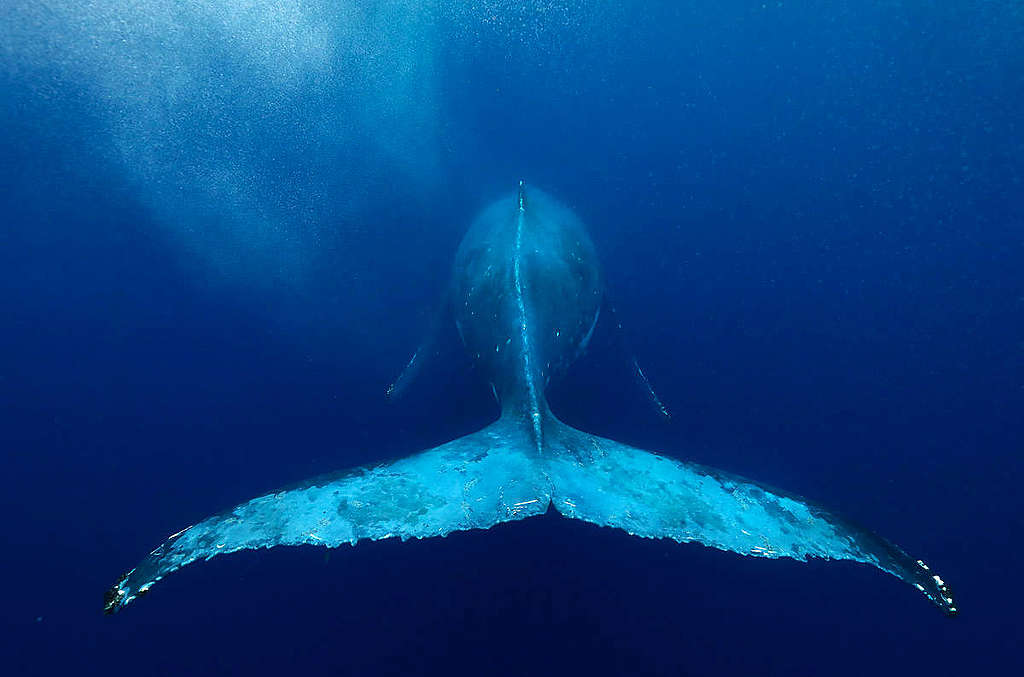Eastern Central Pacific Ocean, 22nd April 2021 – Greenpeace has documented signs of “significant disturbance” from deep sea mining tests in the Pacific Ocean. New images reveal a large patch of sediment rising to the surface of the water after equipment tests carried out by mining company Global Sea Mineral Resources (GSR ), which is aiming to commercially extract minerals from the seabed in the future. GSR is deploying a prototype mining machine approximately 4500 metres deep in the Clarion Clipperton Zone, an area between Mexico and Hawaii.
To highlight the threats of deep sea mining to the oceans, Greenpeace International activists painted “RISK!” in approximately 2 metre high letters across the side of the ship Normand Energy, chartered by GSR.
Dr Sandra Schoettner, deep-sea biologist from Greenpeace International on board the Rainbow Warrior, said:
“We took action because even at the testing stage, mining companies are now impacting one of the most remote and least known environments on Earth. We have witnessed this heavy gear being submerged repeatedly into the water and coming back up surrounded by a large cloud of sediment after the machine worked on the seabed. This indicates that a significant disturbance at the bottom of the ocean is occurring”.
Scientists have already warned that the discharge of smothering and potentially toxic plumes into the water column from deep sea mining, spreading water containing suspended particles, could impact a far greater range of ocean species beyond deep sea creatures and could travel hundreds or even thousands of kilometres.
“’Corporations want to start full-scale mining of the seabed in the next few years, but what we’re witnessing now at the test stage is a stark warning of what could happen if these companies are allowed to plunder the seabed’. As part of humankind’s common heritage, the deep sea must remain off-limits to the mining industry”, said Schoettner.
Early this year, during a stakeholder meeting, GSR announced that a high-resolution camera would be deployed in order to carry out “visual observations” during their tests in the Pacific.
“Full disclosure of the operational images of the area before and after being impacted by the mining gear is critical in order to establish how the tests have disturbed the seabed. A failure to release critical data informing the public of what’s happening at the bottom of the ocean would be tantamount to disguising an environmental crime”, said Schoettner.
Photos & Video available HERE

Seabed mining is a new threat to the oceans. Now is our chance to prevent the destruction before it’s too late.
